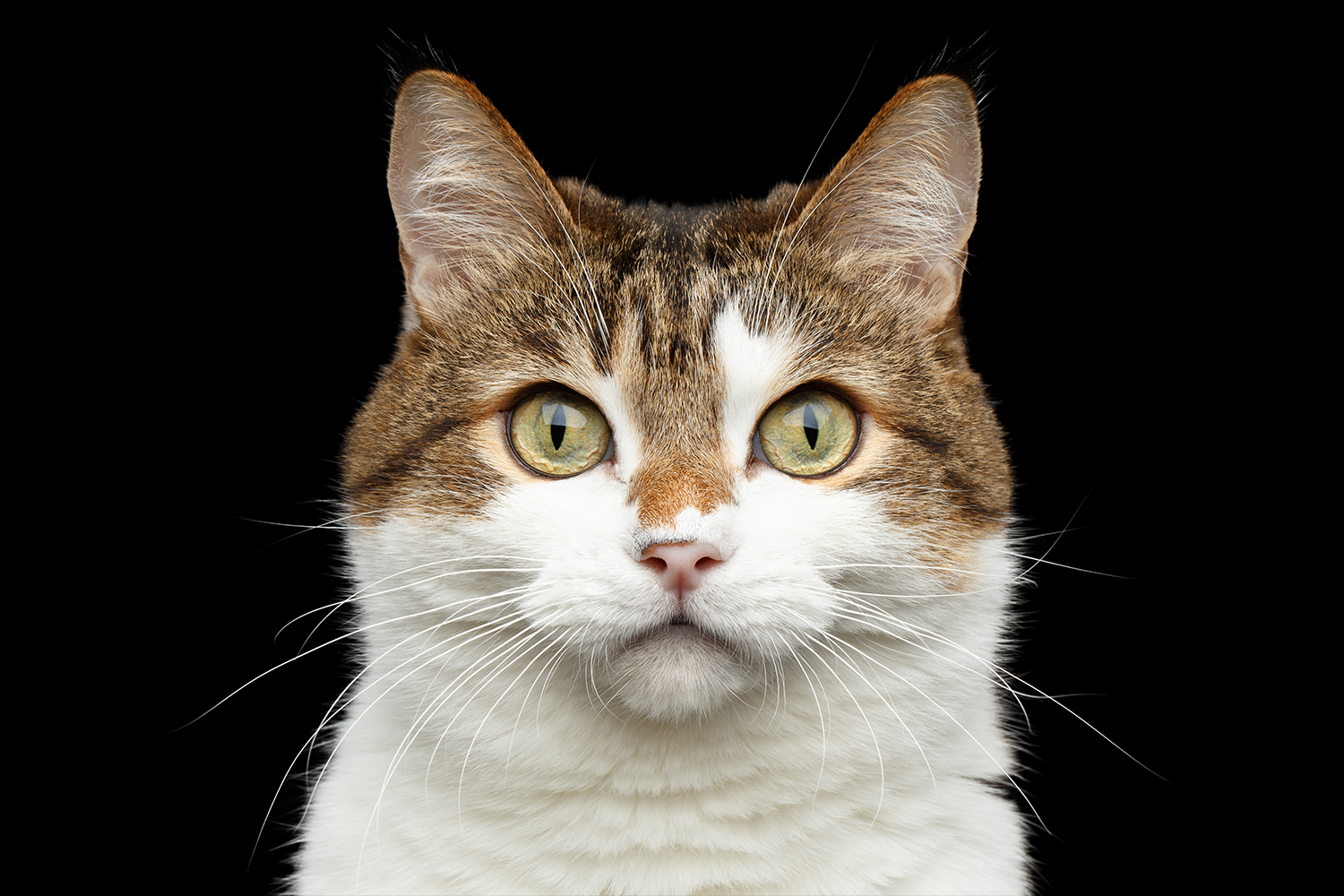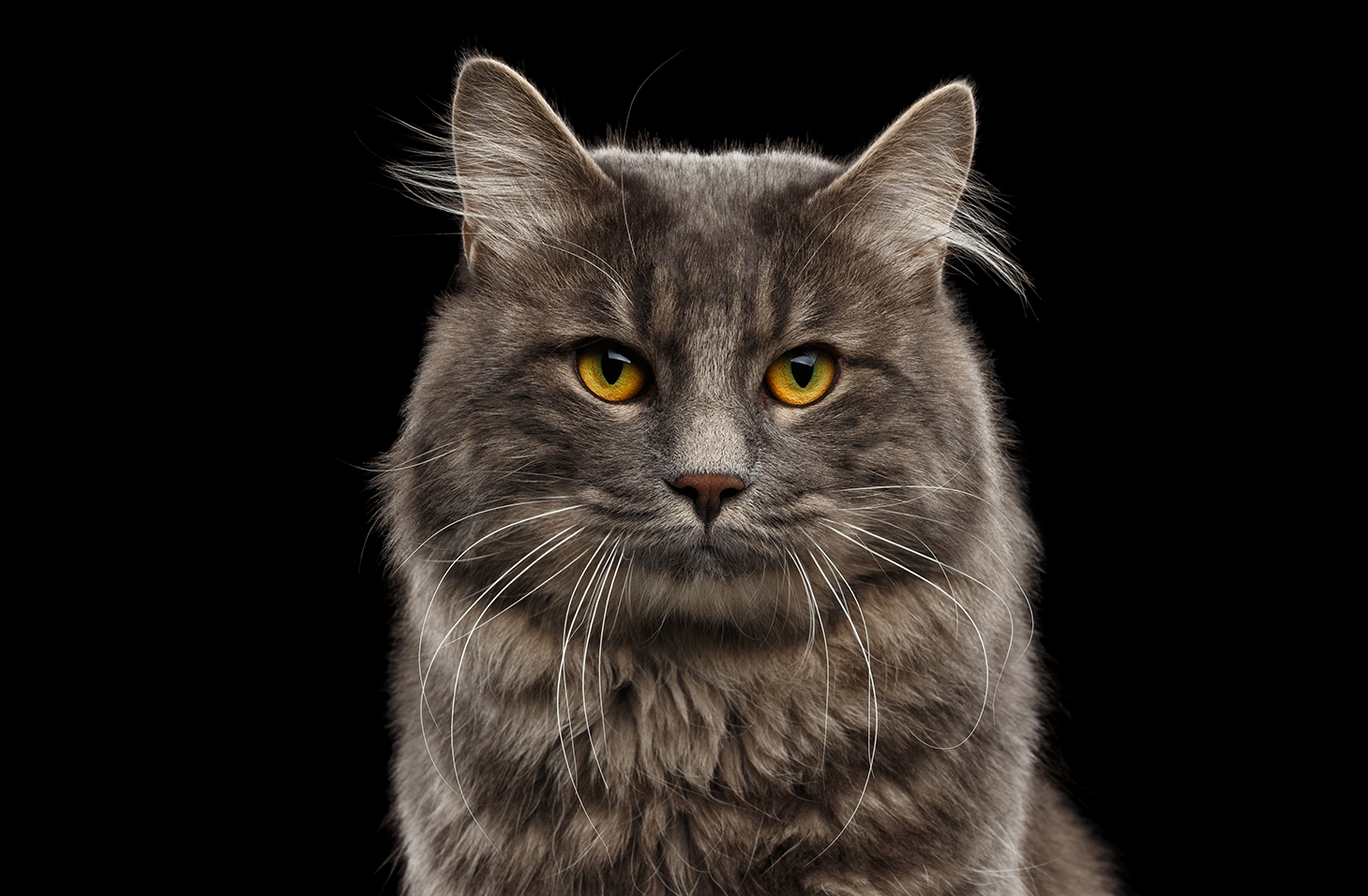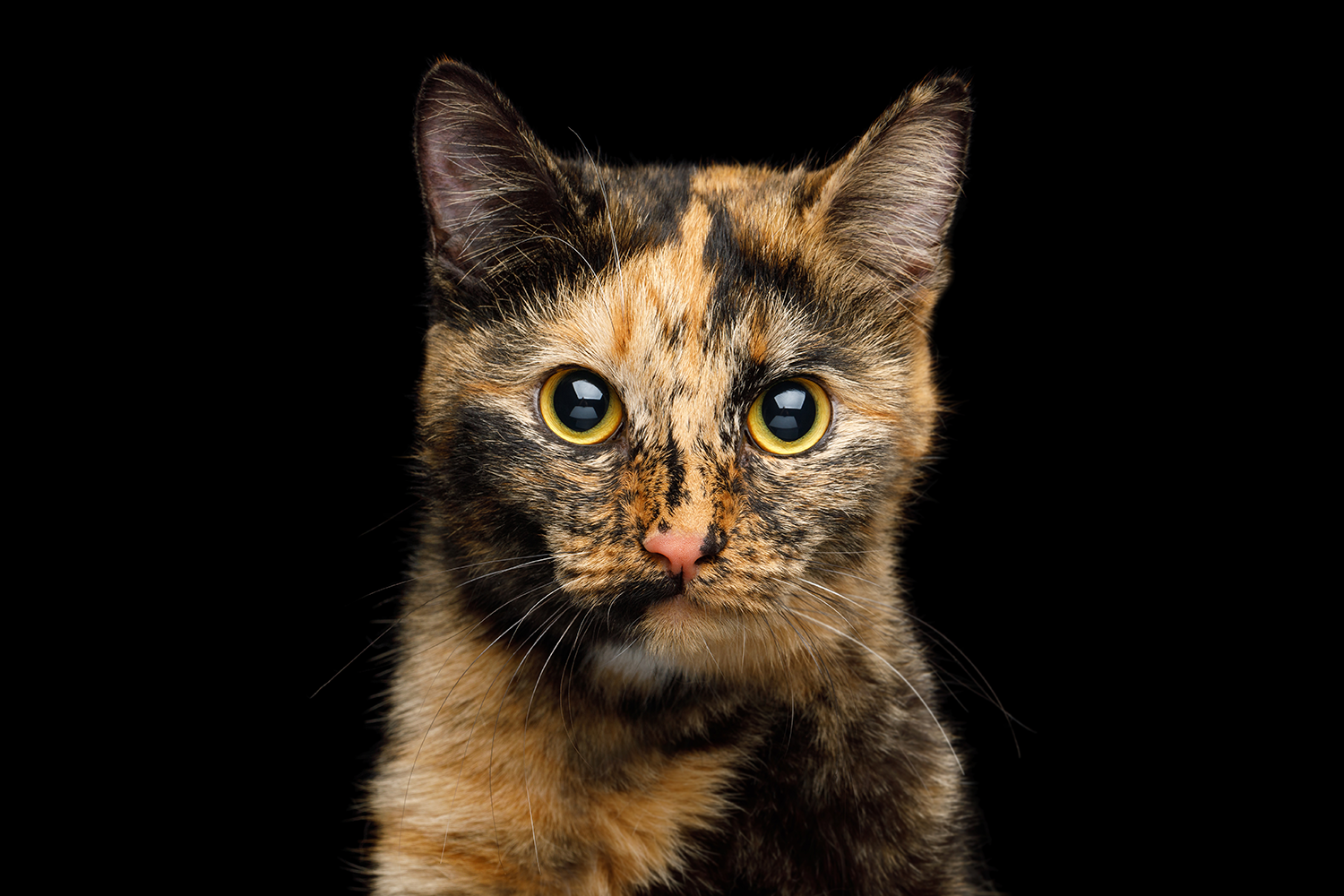Hyperthyroidism: why some old cats get skinny
If your cat is over 10 years of age, there’s a 10% chance she is hyperthyroid. Do you know the signs?
What is hyperthyroidism?
Hyperthyroidism is a type of hormone imbalance. Affected cats have too much thyroid hormone.
Thyroid hormone is produced in the thyroid glands in the neck (we all have one on each side of our windpipe). One or both thyroid glands can develop a (usually benign) tumour, which then produces excessive amounts of thyroid hormone.
It's a common condition – around 10% of cats over 10 years of age have hyperthyroidism. Interestingly, it hasn't always been a common. It's only been a recognised condition since about 1980 and the incidence has steadily increased. Now it's the most common hormone condition in middle-aged and older cats. We think it's similar to Plummer disease in humans, and like the human version, we don't know why it occurs in cats (although there are lots of theories).
WHAT IS THYROID HORMONE?
There are actually two forms of thyroid hormone:
T3 – is the active version, which sets the body's metabolic rate (ie it determines how hard and how fast each cell in the body works)
T4 – is the inactive version, which is secreted by the thyroid glands and then absorbed by cells where it's converted into T3
We measure T4 levels when diagnosing and monitoring hyperthyroidism, but we'll usually just refer to it as thyroid hormone.
What are the signs of hyperthyroidism?
Because thyroid hormone affects every cell of the body, there are lots of signs associated with hyperthyroidism.
The classic signs are:
weight loss
increased appetite ('My cat is always hungry/starving')
increased thirst
increased urination
increased vocalisation ('My cat seems senile' or 'My cat is always asking for something')
agitation, increased activity ('My cat has lost weight and is now much more active')
increased heart rate (called tachycardia)
increased respiratory rate (called tachypnoea)
vomiting and diarrhoea
unkempt hair coat ('My cat can't be bothered grooming any more')
A small percentage of cats have atypical signs of apathy, inappetence and lethargy.
The things we look for during a physical examination include muscle loss (especially the epaxial muscles along the spine), an enlarged thyroid gland, a heart murmur, a heart arrhythmia (gallop), high blood pressure and signs of other disease (eg abdominal masses, small kidneys).
How is hyperthyroidism diagnosed?
The clinical signs of hyperthyroidism aren't exclusive to having too much thyroid hormone. The same signs can be seen with:
diabetes mellitus
gastrointestinal malabsorption or maldigestion
neoplasia (especially gastrointestinal lymphosarcoma)
Therefore, to make a definitive diagnosis, we need to confirm an elevated level or thyroid hormone (T4).
In most cases, a simple blood test tells us whether your cat has hyperthyroidism or not. However, it is possible for things to be less clear cut because thyroid hormone levels are influenced by other conditions (often broadly referred to non-thyroidal disease). When testing for hyperthyroidism, a cat might fall into one of 6 groups. (Skip passed these if medical complexity does your head in!)
GROUP 1: CLASSIC CLINICAL DISEASE
These cats have one or more of the classic clinical signs, an elevated T4 and no identifiable concurrent disease.
The liver enzymes (especially ALT) are often elevated secondary to hyperthyroidism, but we don't consider these a sign of liver disease unless they don't normalise with treatment for hyperthyroidism.
GROUP 2: POSSIBLE HYPERTHYROIDISM WITH PROBABLE NON-THYROIDAL DISEASE
These cats have signs suggestive of hyperthyroidism but a normal T4 level.
We typically recheck the T4 around 2–4 weeks after the initial test and we might also test something called free T4 by equilibrium dialysis (fT4ed). If the T4 level is in the upper normal range and the fT4ed is elevated, we will diagnose hyperthyroidism.
If the T4 and fT4ed are still normal, we further test for non-thyroidal disease especially gastrointestinal disease (malasorption, maldigestion or neoplasia).
If don't find anything, we might consider doing some more obscure thyroid testing (T3, TSH testing, thyroid scintigraphy) or waiting and retesting.
GROUP 3: ENLARGED THYROID WITH CLINICAL HYPERTHYROIDISM
These cats have an enlarged thyroid gland but no symptoms of hyperthyroidism and a normal T4 level.
We monitor for the appearance of clinical signs and repeat the T4 test in 6 months.
GROUP 4: SUBCLINICAL HYPERTHYROIDISM
These cats don't have signs of hyperthyroidism but they do have an elevated T4 level (and maybe some physical examination findings suggestive of hyperthyroidism such as a heart murmur).
We recheck the T4 level in about 2 weeks. If the level is still elevated, we start hyperthyroid treatment. If the level is normal, we retest in 6 months.
GROUP 5: CLINICAL HYPERTHYROIDISM WITH CONFIRMED NON-THYROIDAL DISEASE
These cats have hyperthyroidism confirmed by elevated T4, and one or more concurrent diseases. The most common diseases associated with hyperthyroidism are: thyrotoxic heart disease, hypertension, chronic kidney disease, gastrointestinal disease, insulin resistance).
Because hyperthyroidism is a serious disease, we do recommend starting treatment in all diagnosed cats, including those animals with other illnesses.
GROUP 6: CLINICALLY NORMAL
These cats have no clinical signs of hyperthyroidism and no palpable thyroid nodule but they do have an elevated T4 on screening lab test.
Because falsely elevated T4 values may occur, we repeat the test in 2–4 weeks. If the T4 is now normal, we monitor the cat and retest T4 every 6 months, or sooner if clinical signs develop. If the T4 is elevated, we start treatment for hyperthyroidism.
How is hyperthyroidism treated?
There are several different ways to treat feline hyperthyroidism. All have advantages and disadvantages.
MEDICAL THERAPY
Medical therapy involves administration of antithyroid medication once or twice daily. There are two types of medication: carbimazole (oral) and methimazole (oral or transdermal). They both inhibit production of thyroid hormone – but only for as long as the dose lasts, which means if you stop giving it, the thyroid glands go right back to over production.
Medical therapy is generally effective and can return thyroid levels to normal within 2–3 weeks. This is the most common treatment used.
RADIOACTIVE IODINE
This is largely considered the treatment of choice by most experts. It can cure the disease with a single treatment (injection or oral capsule) as the radioactive iodine kills abnormal cells.
While it has become a lot more accessible over the years, it can only be administered within a facility licensed to handle radioactive material (ie a mini bunker). It also requires a period of hospitalisation.
We need to refer patients for this therapy – usually to Melbourne Uni.
DIETARY THERAPY
To make thyroid hormone, you need to have enough iodine in your diet. Therefore, an iodine-restricted diet can be used to manage hyperthyroidism. Hill's is the only company so far to make a hyperthyroid diet (called Y/D).
SURGERY
We can surgically remove the thyroid gland(s). This is called a thyroidectomy. While hyperthyroidism almost always involves both thyroid glands, it's very common for one gland to be big and the other normal sized. If we remove the big one, there's a significant chance (about 30%) that the smaller one will enlarge and the cat then again becomes hyperthyroid. If we remove them both at the same time, there is an increased risk of hypocalcaemia (too little calcium) due to damage to the parathyroid glands. These are tiny little glands attached to the thyroid glands.
This treatment has largely gone out of fashion given the relative safety and success of alternatives.
Which treatment option is best for your cat depends on a lot of factors. Concurrent disease (especially kidney disease and heart disease) has a significant effect on management of hyperthyroidism – although no other disease prohibits treatment. For every patient, we need to weigh up the advantages and disadvantages.
How are hyperthyroid cats monitored?
Monitoring is recommended to assess whether the disease is being controlled effectively (and not too aggressively). The things we monitor are:
physical condition – we're looking for weight gain, improved body condition score, improved hair coat, resolving tachycardia and resolving behavioural changes
T4 levels
Other blood work – haematology, renal parameters, liver parameters or other parameters as needed
If you notice any of the signs of hyperthyroidism in your cat or you’d like any further information, call us.





